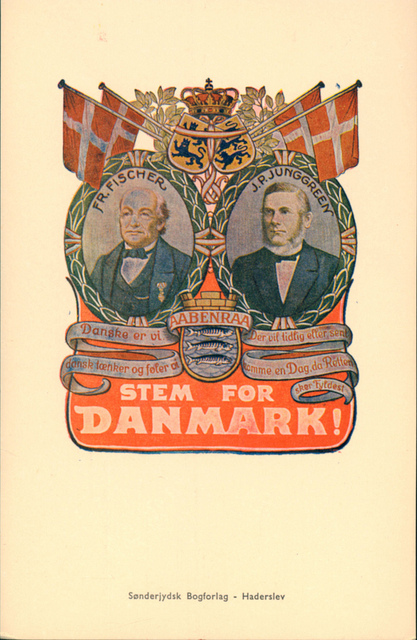Drawing the German-Danish border: posters and propaganda from 1920
Go with Klaus Tolstrup Petersen, historian and director of the Schleswig Collection (Danish Central Library for South Schleswig), back to 1920 when a plebiscite was held on whether the area of northern and middle Schleswig would be Danish or German. Take a look at the many posters and propaganda that were used to try to sway voters in this film in Danish with English sub-titles.

What is now Southern Jutland in Denmark belonged to Prussia after its success in the Second Schleswig War in 1864. Following the German defeat in World War I, the Treaty of Versailles set out that there would be two plebicites to determine whether inhabitants in the areas of northern and middle Schleswig wished to be part of Denmark or Germany. Movements on both sides competed for voters through propaganda and inventive posters, as shown in this film. On 10th February 1920, about 75% voters in the northern zone, zone 1, chose to become Danish. On 14th March 1920, about 80% of voters in zone 2 chose to remain as part of Germany.
This area has a rich history, existing as it did for many centuries as the duchy of Schleswig. It not only culturally linked the German and Scandinavian worlds, but was pulled in different directions politically, particularly after the rise of nationalism in 19th century. In the mid-19th century, the area was the subject of the 'Schleswig-Holstein question'. It is important particularly in Danish history as the Second Schleswig war, often referred to simply as '1864' in Denmark, was a historic defeat, responsible for Denmark's territory and population being reduced dramatically. The border remains along the lines of the plebiscite zones today, but a German minority still exists in Denmark, as does a Danish minority south of the border. Connections were not easily erased even by the drawing of national borders.
The film is made by danmarkshistorien.dk and the Schleswig Collection, the Danish Central Library for South Schleswig, with support from Sydslesvigudvalget. Sub-titles: Kristina Brun Madsen, nordics.info.
Find out more about the history of the border area between Denmark and Germany: